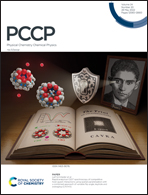Trehalose matrices for high temperature dynamic nuclear polarization enhanced solid state NMR†
Abstract
Dynamic nuclear polarization (DNP) at cryogenic temperatures has proved to be a valuable technique to enhance the sensitivity of solid-state NMR spectroscopy. Over the years, sample formulations have been optimized for experiments at cryogenic temperatures. At 9.4 T, the best performing polarizing agents are dinitroxides such as AMUPol and TEKPol that lead to enhancement factors of around 250 at 100 K. However, the performance of these radicals plummets at higher temperatures. Here we introduce trehalose-based DNP polarizing matrices, suitable to embed biomolecular assemblies. Several formulation protocols are investigated, in combination with various polarizing agents, including a new biradical structure chemically tethered to a trehalose molecule. The DNP efficiency of these new polarizing media is screened as a function of the radical concentration, the hydration level of the matrix and the protein content. Sizeable enhancement factors are reported at 100 K and 9.4 T. More importantly, we show that the DNP performance of these new polarizing media outperform the conventionally used water/glycerol mixture at temperatures above 180 K. This study establishes trehalose matrices as a promising DNP medium for experiments at temperatures >150 K where conventional water-based formulations soften and are no longer viable, thus opening new avenues for DNP enhanced solid-state NMR spectroscopy at temperatures close to ambient temperature.

- This article is part of the themed collection: 2022 PCCP HOT Articles


 Please wait while we load your content...
Please wait while we load your content...